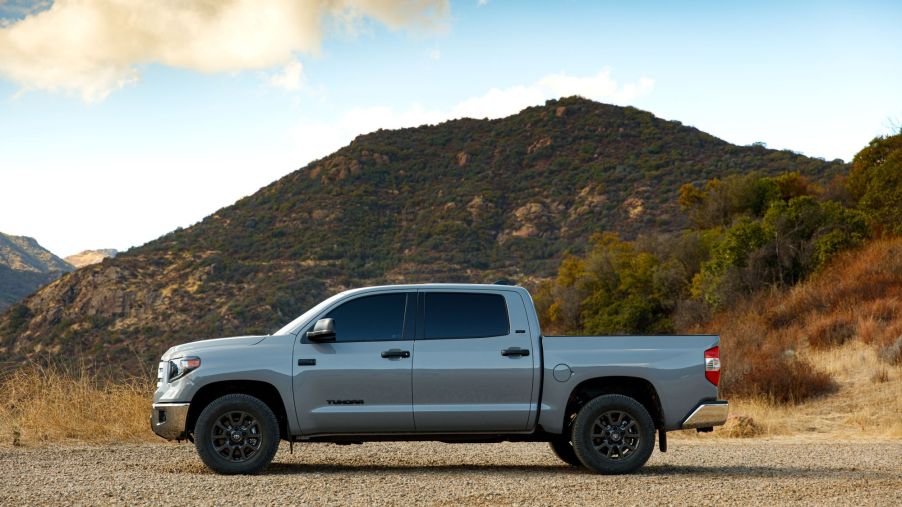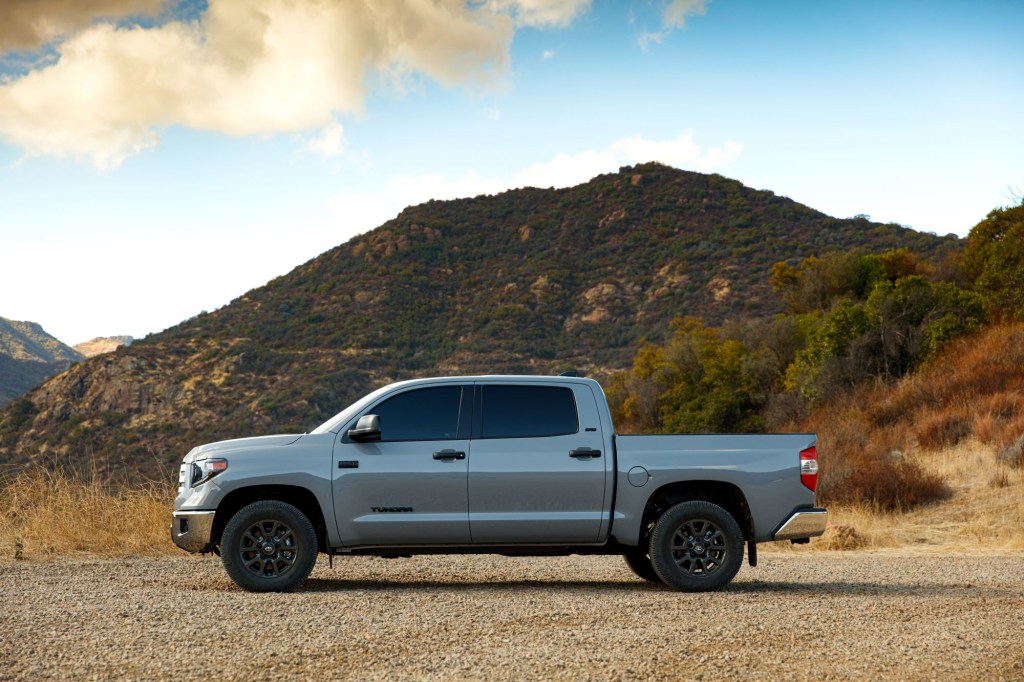
Toyota Tundra – Strong Fourth Horse in a Three-Horse Race
If you haven’t figured it out by now, full-size pickup trucks are a big deal in the USA. Detroit’s “Big Three” have squared off with their prospective offerings: the Ford F-150, the Chevy Silverado, and the Ram 1500. As far as the North American truck market goes, it’s primarily down to those three main contenders. Nonetheless, the Toyota Tundra has been working hard to join the fray, aiming to prove that it’s just as popular with American drivers. After all, the Tundra is still the only full-size pickup truck made in Texas—a state that boasts 4.2 million pickup truck owners.
The “Big Three” have been crushing annual sales for years

The Ford F-150, Chevy Silverado, and Ram 1500 have done nothing but crush the full-size pickup truck market for over a decade and a half. Looking at the annual sales figures for the Ford F-150 starting back in 2006 through Q1 and Q2 2021, it only sold below half a million units once. According to GoodCarBadCar, 2009 was the worst year for the F-150, selling only 413,625 units. However, Ford sold between 750,000 and 800,000 units more frequently, with figures exceeding or nearly exceeding 900,000 several times.
As for the Chevy Silverado, sales figures barely climbed over 700,000 once in 2005. After that, it only managed to sell slightly over 600,000 units three times between 2006 and 2015. Overall, the median number of Silverado models sold is around 574,876 units, compared to the average of 764,402 sold for the F-150. To put it in another perspective, Ford sold 12,049,841 F-150 models between 2005 and 2021, and Chevrolet only sold 8,630,042 Silverado models.
The Ram 1500—though being the third best-selling full-size pickup in the U.S.—faired a lot worse. The Ram 1500 model’s best year to date was in 2019, when it managed to sell 633,694 units. For some reason, the number of units fluctuated considerably from between as low as 177,268 in 2009 to 563,676 in 2020. The total number of Ram 1500 models sold between 2005 and 2021 has been 6,421,542, averaging 364,177.
The Toyota Tundra still boasts fourth place, though drastically behind
Even when compared against the poor sales figures of the Ram 1500, the Toyota Tundra barely nicked the chart. According to GoodCarBadCar, the Tundra’s best year was in 2007 when it sold 196,555 units, nearly reaching 200,000. Since then, sales numbers have fluctuated between 101,000 and 119,000 units. Interestingly enough, the midsize Toyota Tacoma has a slightly better sales record than its bigger sibling, with 114,385 units sold in 2021 compared to the Tundra model’s meager 36,241 units.
In terms of general pickups, the 2021 Toyota Tacoma is the fourth best-selling pickup in America without market segmentation. Of course, with two new special edition models and 31 other possible trim combinations, it’s not surprising.
What are some pros and cons of the Toyota Tundra?
As we wrote back in late April, the Toyota Tundra holds its value fairly well. According to our findings, the Tundra will only depreciate by 15 percent within the initial year of ownership. After about three years, you can expect just 23-percent depreciation. Cost of ownership combined with depreciation are among the top three factors one should consider when purchasing a new vehicle. It also has won Kelley Blue Book’s 5 Year Cost to Own Award as another huge plus.
The 2021 Tundra has a powerful V8 engine that produces 381 hp and 401 lb-ft of torque; it offers a great deal of standard and available features; passengers will have plenty of legroom in both rows of seats. However, that’s where the pros end. It’s been over a decade since Toyota last gifted the Tundra with a refresh or a redesign. This means that the Tundra boasts a less stylish and modern interior compared to its competitors.
The Tundra hasn’t quite earned a good reputation for solid reliability. While there are some decent model years, the Tundra has its fair share of models to steer clear of. The thing potential buyers should be most wary of, nonetheless, is its below-average safety score, jarring ride quality, and poor gas mileage. It only gets an EPA-estimated 13 mpg in the city and 17 mpg on the highway.
Reviewers at U.S. News wrote that the 2021 Toyota Tundra has unimpressive cabin materials and lower towing and hauling capacities than most rivals in the same segment. With all that said, you should take a closer look at other options unless you love Toyota.


